DAMARISCOTTA — The morning sky was overcast, but enough energy was piercing the mid-October gloom for the solar panels in Dan Burr’s yard to send a small charge into the battery bank. Not enough to run the house, but the day before was sunny, and clearing was expected tomorrow. So this was a day to avoid using the toaster oven or induction cooktop. Maybe cook supper on the propane gas range.
These are the kind of mental calculations Burr makes instinctively, after six years of living beside a pond in the woods, off the electric grid.
Living off the grid. It’s an ideological statement for some. It’s also an emblem of self-reliance in a hyper-connected world, where the term has come to mean a weekend without smartphone service or posting on Facebook. For decades, it also has meant sacrificing comfort and convenience.
But Burr and his wife, Joyce, aren’t hauling water to a yurt and reading by candlelight. They don’t fret about their carbon footprint. They live in a modular home, just as thousands of rural Mainers do. They have an electric refrigerator and freezer, a washer and dryer and a flat-screen TV, just as any modern household might.
Living off the electric grid still requires some concessions, however, and there are good reasons to stay connected. But three factors are making it easier than ever to cut the cord.
First, the cost of solar-electric panels has fallen drastically over the past few years, so homeowners can generate more power for less money. Second, LED lights and efficient appliances have gone mainstream, so the power lasts longer. Third, the technology inside electric-car batteries is coming to the home, sparking a revolution in how energy is stored for when the sun is not shining.
Taken together, these factors promise to feed the fantasy of living off the grid. But even for the majority of Mainers who will stay connected, today’s off-grid homes offer lessons in how to use less energy.
Dan Burr didn’t go off the grid to save the world. He bought 42 acres here with frontage on Paradise Pond and learned it would cost $100,000 to bring utility poles and wires down his half-mile gravel driveway.
“The only way,” he said, “was off the grid.”
In 2009, Burr had a Pennsylvania-built, Excel Home ranch-style modular set onto a concrete foundation overlooking the water. From an energy standpoint, it’s pretty basic. Two-by-six walls. Double-pane vinyl windows. No foundation insulation. But it’s tight enough that the Burrs stay cozy by tossing four cord of wood, cut from their land, into a Jotul wood stove in the living room. If they go away, a small, propane-fired boiler takes over.
Outside, things get more interesting. Eight solar panels are mounted on a pole in the yard, next to a smaller pole with four panels. Each array can be tilted up and down, to optimize the angle at which the sun strikes the solar cells in winter and summer. That feature maximizes the power output to the 16 batteries.
At first, Burr had only the eight-panel array. It didn’t generate enough power for an electric refrigerator or freezer. He relied on propane appliances, which were expensive to run. Adding the four panels increased charging capacity enough to run an EnergyStar-rated electric refrigerator and freezer. The refrigerator draws less power than an old-style, 100-watt lightbulb.
Burr spent $21,000 for the initial solar panel array and $7,000 for the upgrade. Today, he figures he could get a similar system for 40 percent less.
The house also has a propane-fired generator that switches on automatically when the battery bank is diminished. Burr isn’t shy about using propane. He burned 425 gallons over the past year, a period when prices were high. In this case, comfort and convenience translated into a $1,400 propane bill.
More solar panels and more batteries could cut that cost, but Burr has chosen to strike a pragmatic balance. Besides, the couple is planning to retire soon and the house, along with three acres and 200 feet of waterfront, is for sale. The asking price is $325,000.
Asked if he would do anything different today, Burr said he’d start with at least as much solar output and battery storage as he has now.
“If you’re going to go off the grid, your power is really the batteries,” he said. “That’s what runs the house.”
DRIVING TECHNOLOGY
That observation is behind the innovations in battery technology in a new product by Tesla, the high-end, electric car company. The Tesla Powerwall is an automated, lithium ion battery roughly the size of a big suitcase. It’s being marketed for emergency backup in a power failure, but also to feed solar homes in the morning and evening, when sunlight is weak. Powerwall isn’t cheap. One wall-mounted unit costs $3,500, plus installation.
This fall, renewable energy giant SolarCity is rolling out a turnkey system for homes that includes solar panels, the Powerwall and all monitoring and control equipment. SolarCity doesn’t do business in the state, but Mainers who have heard of the plan are asking Ross Bradley of Uprising Solar in Bristol about it.
“I’ve had plenty of interest,” said Bradley, who installed Burr’s solar set-up and also lives in an off-the-grid house. “One out of three people asking about solar will ask about the Tesla Powerwall. So people are thinking about it.”
‘LIVING THE DREAM’
For now, though, off-the-grid living in Maine seems largely confined to homes that are on remote islands or too far from utility lines. And the decision can be influenced by family size and changing power needs, solar installers say. Bradley’s experience, and that of two other off-the-grid homeowners, illustrates the range of thinking.
Bradley and his wife built their home in Bristol nine years ago. Running power lines would have cost $50,000. The home is heated with wood and propane, and powered by solar, but Bradley needs to run a portable gasoline generator on cloudy days.
That’s because the home’s electric load has increased in recent years, with the arrival of two young sons. So Bradley is looking to double his solar and battery capacity. He also may install a super-efficient, air-source heat pump, which he sells, and use sun-made electricity to run the unit.
“When people say they could never live this way, in the dark with candles, that couldn’t be farther from the truth,” he said. “More than ever, people are living off the grid far more comfortably, and the costs have come down so much.”
John Luft went down a similar path 12 years ago, when he and his wife bought a wooded lot in Brooks. It was far from the road, but they could afford the land and built a two-bedroom cape heated with wood and powered by solar.
“Cleared the land, living the dream,” Luft said.
But his modest solar array wasn’t big enough to power an electric refrigerator, so he relied on propane, which was expensive. He couldn’t run a freezer and when he raised pigs, he had to keep the meat at a friend’s house in Belfast.
“If I wanted my bacon, I had to drive to Belfast to get it,” he said.
Then children arrived, and Luft wound up running a gasoline generator in the winter. A year ago, the couple moved to a grid-connected home with their boys, who are now 9 and 13 years old.
Luft has mixed feelings. He’s branch manager in Liberty for ReVision Energy, the state’s largest solar installer. He loved the feeling of independence, of being hyper-conscious of how much power he was using. But he didn’t like burning gasoline and propane, and knew battery production had an impact on the environment.
“The reality set in a little,” he said. “But I don’t regret it. If we didn’t have kids, we might still live that way.”
A FAMILY AFFAIR
But for Jim Merkel, a family isn’t an obstacle to off-grid living. He’s teaching his son, who is 6 years old, to be energy-conscious at a young age.
“He turns lights off,” Merkel said. “He knows who uses a lot of power and what doesn’t.”
Merkel and his partner, Susan Cutting, built a two-bedroom home with lumber from their land. It’s 900 feet off a paved road in Belfast.
This home was designed to minimize energy use. South-facing windows welcome the sun’s warmth. The walls and ceiling have twice the insulation value as is typical in a new Maine house. The triple-pane windows come from Europe.
The family prepares meals in winter on a cookstove, which also is the primary heat source and can work in tandem with the solar hot-water panels. Last year they consumed two cords of wood. In the summer, they cook on a gas range, burning only 40 gallons of propane in the past two years.
The home’s solar and battery capacities are relatively modest, and after a few cloudy autumn days, Merkel may need to fire up a small gasoline generator. But months can go by before that’s necessary.
Mostly, the house functions by doing more with less. LED lights. A chest-style refrigerator that runs on a 75-watt solar panel. Vigilance against “phantom loads,” the plugged-in laptops, printers, clocks and chargers that draw power 24/7. No laundry on a cloudy day. Air-dry clothes, rather than run a dryer.
“If you go with a gas dryer and fridge, you’re just shifting to fossil fuels,” Merkel said. “But if you can get your loads real low, you can have a comfortable life.”
Copy the Story Link
Send questions/comments to the editors.


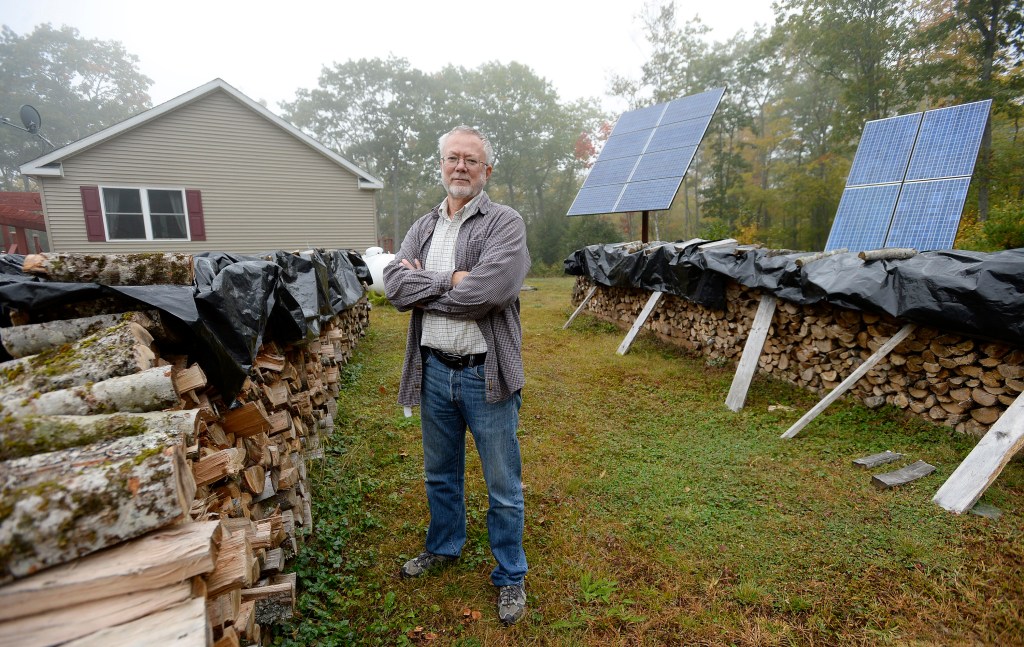
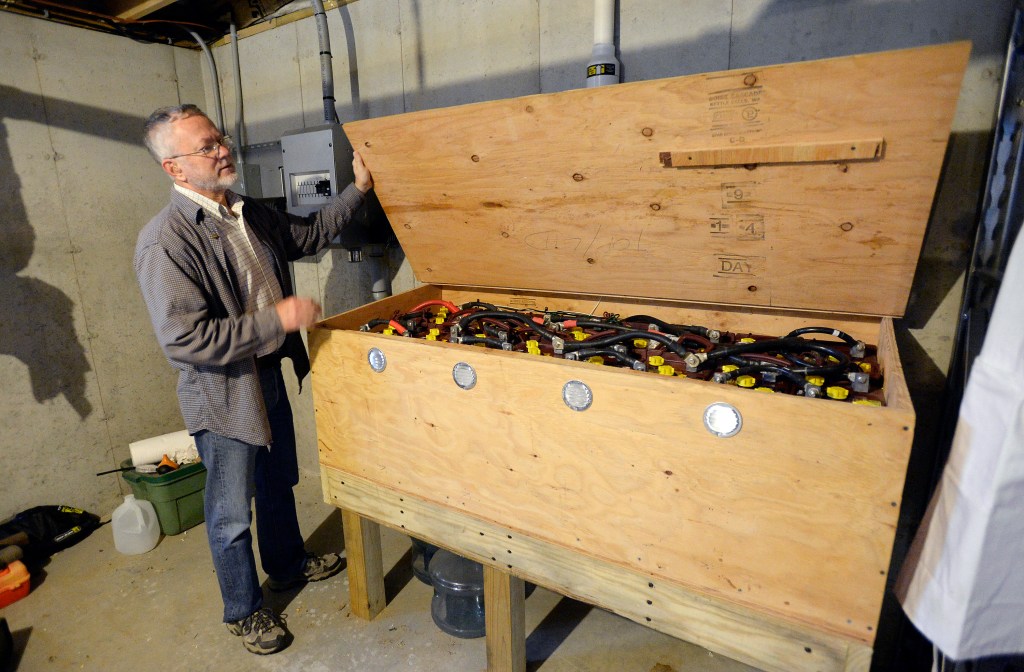
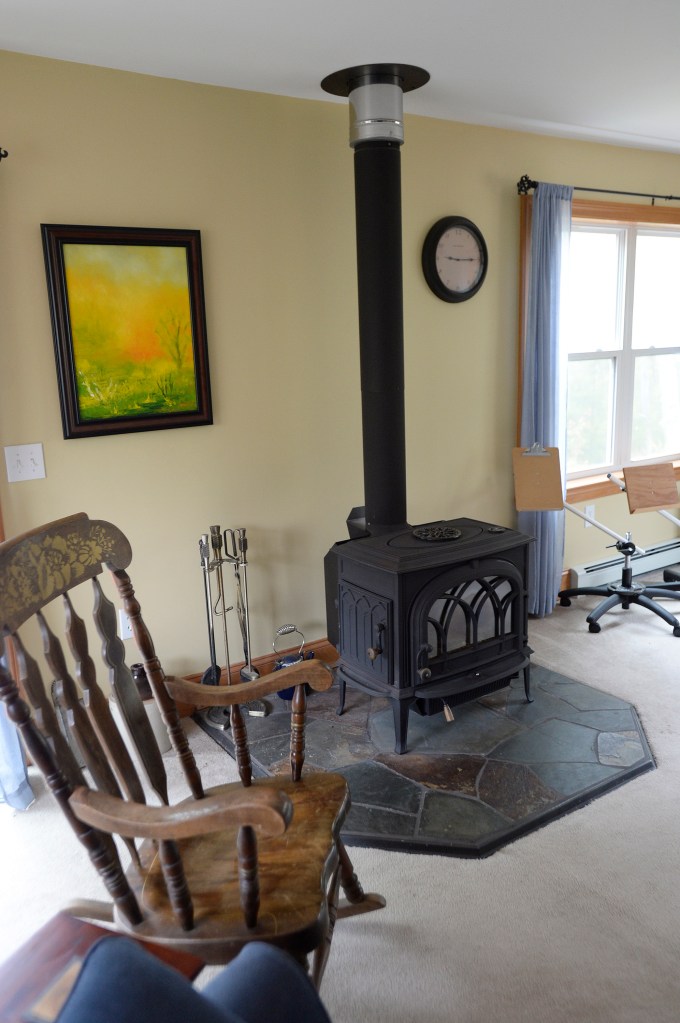
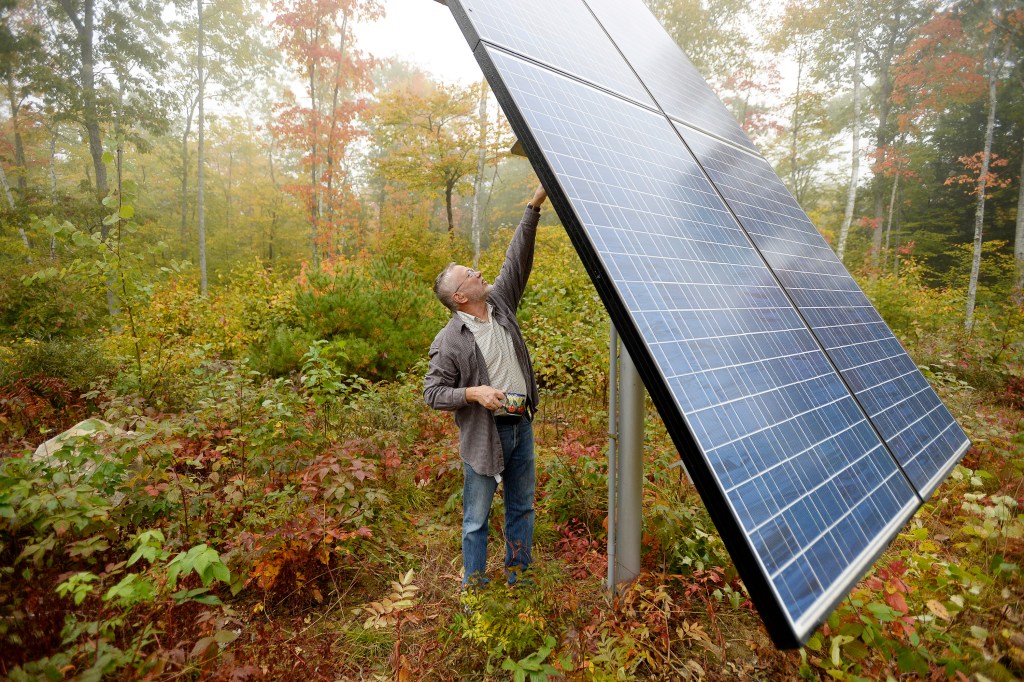
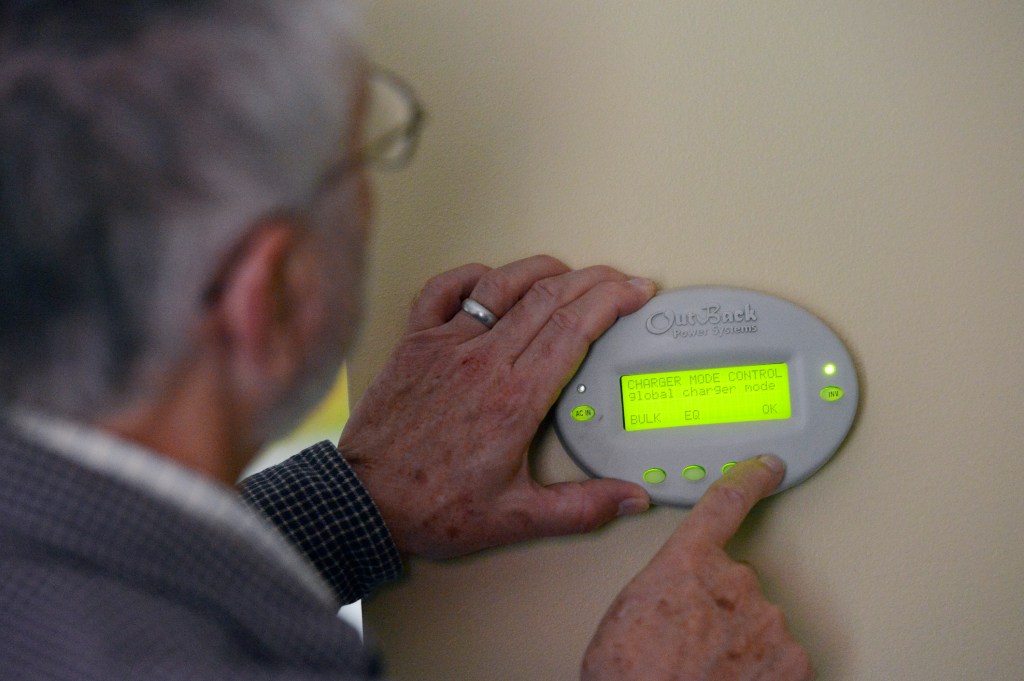
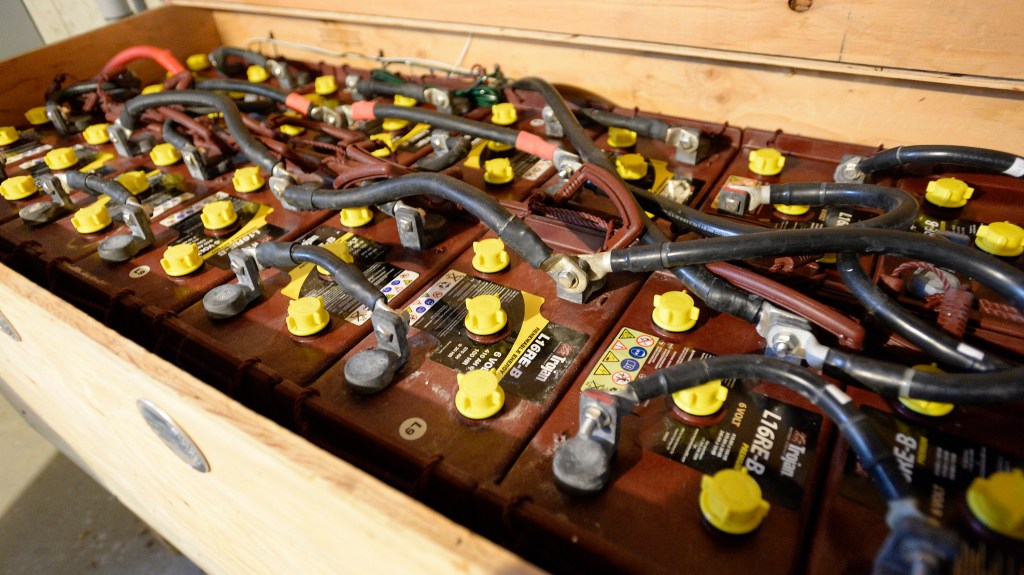
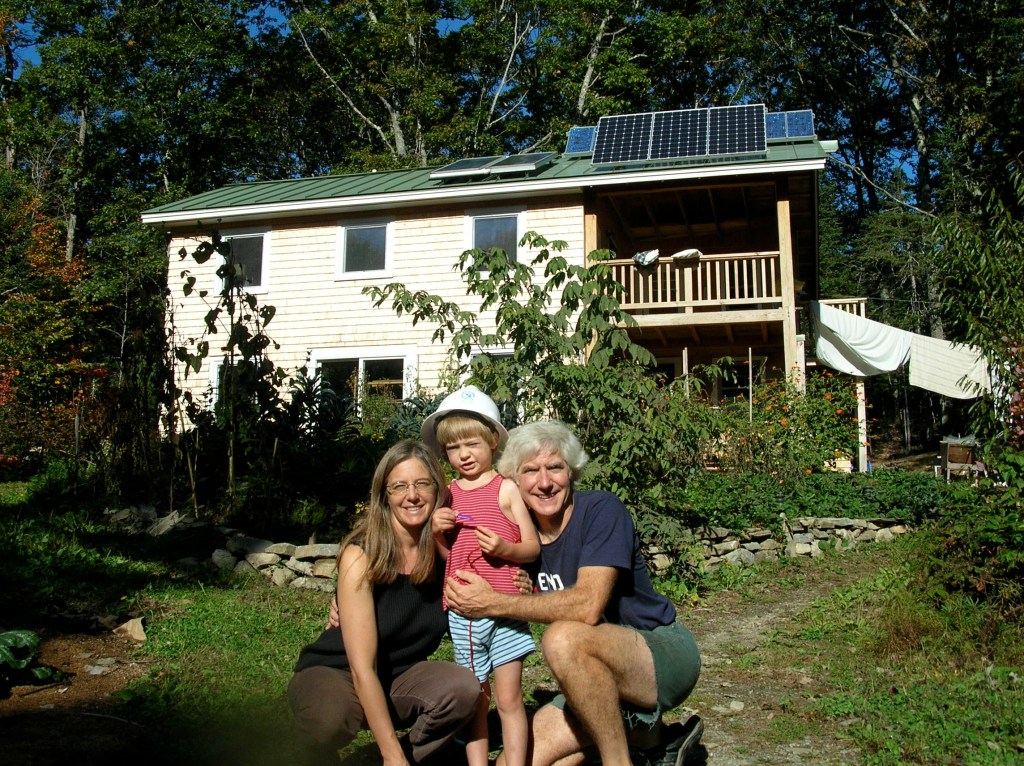

Success. Please wait for the page to reload. If the page does not reload within 5 seconds, please refresh the page.
Enter your email and password to access comments.
Hi, to comment on stories you must . This profile is in addition to your subscription and website login.
Already have a commenting profile? .
Invalid username/password.
Please check your email to confirm and complete your registration.
Only subscribers are eligible to post comments. Please subscribe or login first for digital access. Here’s why.
Use the form below to reset your password. When you've submitted your account email, we will send an email with a reset code.